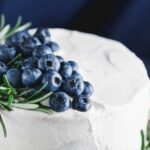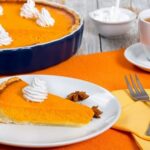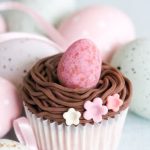Are you looking to learn how to use wafer paper for cake decorating? Wafer paper is a versatile and edible material that can be used to create stunning decorations for your cakes. In this article, we will explore the different aspects of using wafer paper, from selecting the right type to troubleshooting common issues and creating beautiful edible art.
Wafer paper, also known as rice paper, is a thin, edible sheet that has been used in cake decorating for many years. It adds a delicate and elegant touch to cakes, making it a popular choice among bakers and decorators. Understanding the history and origin of wafer paper can provide insight into its traditional uses and inspire new creative ideas for modern cake designs.
When it comes to using wafer paper for cake decorating, it’s important to select the right type of wafer paper for your specific needs. This includes considering factors such as thickness, size, and brand. Properly preparing and handling the wafer paper is also crucial in achieving successful results without tearing or misshaping the delicate material. Stay tuned as we delve into the various techniques and methods for utilizing wafer paper in cake decorating.
Selecting the Right Wafer Paper for Cake Decorating
When it comes to selecting the right wafer paper for cake decorating, there are several factors to consider. Different types and brands of wafer paper offer varying levels of durability, thickness, and flexibility. It is important to choose the right wafer paper that will best suit your specific cake decorating needs. Here are some tips for selecting the right wafer paper for your cake decorating projects:
- Thickness: Consider the thickness of the wafer paper. Thicker wafer paper is more durable and easier to handle, making it suitable for intricate designs and decorations.
- Flexibility: Look for wafer paper that is flexible enough to be molded or shaped without tearing. This is especially important if you plan on creating 3D decorations or working with curved surfaces.
- Brands: Research different brands of wafer paper and read reviews to find out which ones are highly recommended by other cake decorators. Some well-known brands may offer better quality and performance.
In addition to thickness, flexibility, and brand reputation, it’s also important to consider the intended use of the wafer paper. For example, if you plan on creating edible printed images for cakes, you may need a specific type of wafer paper designed for use in printers.
Properly selecting the right wafer paper will ensure that your cake decorating projects turn out as envisioned without any unexpected tearing or misshaping issues. With the right type of wafer paper, you can achieve beautiful and professional-looking cake decorations.
With a few simple considerations in mind, you can ensure that you select the perfect wafer paper for your cake decorating needs.
Preparing Wafer Paper for Cake Decorating
Wafer paper, also known as rice paper or potato paper, is a thin, edible paper that has become increasingly popular in the world of cake decorating. This versatile and delicate material can be used to create stunning and intricate designs on cakes, cupcakes, and other baked goods. In this section, we will discuss the important steps for preparing wafer paper for cake decorating.
Storing wafer paper properly is essential to maintaining its quality and preventing damage. It is best to keep wafer paper in a cool, dry place, away from direct sunlight and moisture. To avoid any potential tearing or misshaping, it is crucial to handle the wafer paper with care. When working with wafer paper, make sure your hands are clean and dry to prevent any unwanted moisture from affecting the paper.
When cutting or shaping wafer paper for cake decorating, it is important to use clean, sharp tools such as scissors or craft knives. Dull blades can cause the wafer paper to tear or crumple, leading to imperfect results. Additionally, using a cutting mat underneath the wafer paper can help provide stability while cutting and prevent any damage to your work surface.
Techniques for Using Wafer Paper in Cake Decorating
Wafer paper is a versatile and unique material that has become increasingly popular in the world of cake decorating. It is a thin, edible paper that can be used to create stunning decorations for cakes and other desserts. In this section, we will explore different techniques for using wafer paper in cake decorating and provide step-by-step instructions for applying it to cakes.
One of the most common ways to use wafer paper in cake decorating is by creating edible images or designs. This can be done by printing or drawing on the wafer paper with edible ink or food colorings.
To do this, simply place the wafer paper on a flat surface and carefully apply the desired image or design using a fine paintbrush or food-safe markers. Once the image is completely dry, it can be carefully cut out and applied to the cake using a small amount of clear piping gel as an adhesive.
Another technique for using wafer paper in cake decorating is to create three-dimensional shapes and designs. This can be achieved by cutting the wafer paper into various shapes and then gently bending or folding it to create dimension. For example, you can create delicate wafer paper flowers by cutting out petal shapes, layering them together, and then gently curving the edges to give them a lifelike appearance.
When working with wafer paper for cake decorating, it’s important to handle it with care to avoid tearing or misshaping. To prevent any issues, it’s best to use sharp scissors or craft knives for cutting the wafer paper, and always handle it gently when applying it to cakes.
| Techniques for Using Wafer Paper | In Cake Decorating |
|---|---|
| Creating edible images or designs | Using food colorings or edible ink |
| Creating three-dimensional shapes | Bending or folding wafer paper |
| Tips for handling wafer paper | Gently handling and sharp tools |
Coloring and Painting on Wafer Paper
Wafer paper is a versatile and unique material that can be used to create stunning cake decorations. One of the most exciting aspects of working with wafer paper is the ability to color and paint on it, allowing for endless creativity and customization. In this section, we will explore the various techniques and tips for coloring and painting on wafer paper to enhance your cake decorating projects.
Tips for Coloring Wafer Paper With Food Colorings
When it comes to coloring wafer paper, it’s important to use food-safe colorings specifically designed for use on edible materials. Gel or powdered food colorings work best for wafer paper as they won’t make the paper soggy or affect its texture. Before applying any coloring, ensure that the wafer paper is completely dry to avoid any smudging or bleeding of colors.
To achieve vibrant and bold colors, mix the food colorings with a small amount of clear alcohol (such as vodka) before applying them to the wafer paper. This will help the colors spread more easily and dry quickly without warping the paper. Additionally, consider using an airbrush or a small paintbrush to apply the colors in layers for a smoother and more even finish.
Techniques for Painting on Wafer Paper
Painting on wafer paper opens up a world of possibilities for creating intricate designs and patterns. To begin, lightly mist the wafer paper with water to slightly dampen it – this will allow the paints to blend more seamlessly without causing any damage to the paper. Use edible liquid-based food coloring diluted with clear alcohol or lemon extract when painting on wafer paper as it dries faster and won’t cause any discoloration or splotchiness.
With delicate brush strokes and a steady hand, you can create beautiful watercolor-like effects or detailed designs on wafer paper. Consider experimenting with different brushes, sponges, stencils, or even edible markers to achieve various textures and details in your painted designs. Remember to let each layer of paint dry completely before adding additional details or layers to prevent smudging.
Overall, coloring and painting on wafer paper adds an extra dimension of artistry and personalization to your cake decorating projects. Whether you’re looking to add subtle accents or create intricate masterpieces, mastering these techniques will elevate your creations and impress anyone who sees them. Now that you have learned about these techniques, you are ready to take your cake decorating skills to a whole new level with wafer paper.
Troubleshooting Common Issues With Wafer Paper
Wafer paper is a versatile and delicate material that can be used to create stunning edible decorations for cakes. However, like any decorating medium, it comes with its own set of challenges. Common problems when using wafer paper for cake decorating can include issues such as wrinkling, tearing, or cracking. Understanding how to troubleshoot these issues can make the process of working with wafer paper much smoother.
One common problem when working with wafer paper is wrinkling. This can occur when the paper is exposed to moisture, causing it to become soft and lose its shape. To prevent this issue, it’s important to store wafer paper in a dry environment and handle it with clean, dry hands. If wrinkling does occur, gently pressing the wafer paper between two flat surfaces and allowing it to dry completely can often help smooth out any wrinkles.
Another issue that may arise when using wafer paper for cake decorating is tearing or misshaping the delicate material. To avoid tearing, handle the wafer paper with care and use sharp, clean scissors or a craft knife to cut out shapes or designs.
When applying the wafer paper to a cake, work slowly and carefully to minimize the risk of tears. Additionally, ensure that the surface of the cake is not too moist when applying the wafer paper, as this can cause it to become fragile and tear more easily.
Cracking is another potential problem that may occur when working with wafer paper. This can happen if the paper becomes too dry or if it is bent or manipulated in a way that causes stress on the material. To prevent cracking, store wafer paper in an airtight container with a desiccant packet to maintain its flexibility. When shaping or bending the wafer paper for decorations, do so gently and gradually to avoid putting too much pressure on the material.
Edible Art
When it comes to creating beautiful and unique cake decorations, wafer paper offers a versatile and edible option for adding stunning designs to your baked creations. From delicate flowers to intricate butterflies, wafer paper can be transformed into edible works of art that will impress any recipient. In this section, we will explore the various ways you can use wafer paper to create stunning decorations for your cakes.
Instructions for Creating Wafer Paper Decorations
One of the most popular uses for wafer paper in cake decorating is creating edible decorations such as flowers, butterflies, and other intricate designs. To make wafer paper decorations, start by cutting out the desired shapes from the wafer paper using sharp scissors or a craft knife.
You can then use edible glue or a small amount of water to adhere the wafer paper shapes to your cake or cupcakes. For more detailed decorations, consider using edible food markers or adding additional layers of wafer paper to create dimension.
Showcasing Examples of Wafer Paper Cake Decorations
To inspire your creativity, here are some examples of stunning wafer paper cake decorations that you can recreate or use as inspiration for your own designs:
- Delicate wafer paper roses cascading down a wedding cake
- Colorful wafer paper butterflies hovering around a birthday cake
- Intricate lace patterns created with wafer paper on a vintage-inspired celebration cake
By incorporating these types of edible art into your cake decorating repertoire, you can elevate the visual appeal of your creations while also offering guests an unexpected and delightful treat.
Tips for Preserving Wafer Paper Decorated Cakes
Once you’ve adorned your cakes with wafer paper decorations, it’s important to properly care for them to maintain their quality. To keep the wafer paper looking its best, store decorated cakes in a cool, dry place away from direct sunlight and moisture.
When transporting cakes with wafer paper decorations, handle them with care and avoid touching the delicate designs whenever possible. With proper storage and handling techniques, you can ensure that your wafer paper decorations remain vibrant and visually stunning until they are enjoyed by those lucky enough to indulge in your delectable creations.
Caring for Wafer Paper Decorated Cakes
When it comes to creating beautiful and unique cake decorations, wafer paper is a versatile and popular choice among professional bakers and home decorators alike. This edible paper is made from potato starch, vegetable oil, and water, making it a safe and edible option for adding intricate designs, patterns, and even three-dimensional decorations to cakes. The history of wafer paper can be traced back centuries, with its use in early religious ceremonies and traditional European baking.
To ensure the best results when using wafer paper for cake decorating, it’s important to select the right type of wafer paper that suits your specific design needs. Consider factors such as thickness, flexibility, and print quality when choosing the perfect wafer paper for your cake projects. Certain brands may offer different options for customization such as pre-printed designs or flavored options to complement the flavor profile of your cake.
Proper care and handling of cakes decorated with wafer paper are essential in preserving the quality and appearance of the decorations. When storing cakes with wafer paper decorations, it’s important to keep them in a cool, dry place away from direct sunlight or moisture.
Additionally, take care not to directly touch or handle the wafer paper decorations too much as they can become fragile when exposed to moisture from hands. By following these tips, you can ensure that your wafer paper decorated cakes remain visually stunning and delicious for longer periods.
Final Thoughts and Resources
In conclusion, wafer paper is a versatile and creative medium for cake decorating, offering endless possibilities for adding stunning and unique designs to your baked creations. By following the tips and techniques outlined in this article, you can confidently use wafer paper to elevate the visual appeal of your cakes and desserts.
Remember to select the right type of wafer paper for your specific cake decorating needs, considering factors such as thickness, flexibility, and print quality. Proper storage and handling of wafer paper are essential in avoiding tears or misshaping, so be sure to follow the recommended guidelines.
Whether you’re looking to create delicate flowers, intricate patterns, or custom decorations for special occasions, wafer paper offers a wide range of opportunities for edible art. With a bit of practice and experimentation, you’ll soon discover how to use wafer paper for cake decorating in ways that are both beautiful and delicious.
Be sure to explore additional resources and tutorials on wafer paper techniques, as well as connect with other bakers and decorators who share their experiences with using this unique medium. With dedication and creativity, you can master the art of using wafer paper for cake decorating and bring your sweet confections to life in new and exciting ways.
Frequently Asked Questions
How Do You Get Wafer Paper to Stick to a Cake?
Getting wafer paper to stick to a cake involves using a light layer of corn syrup or piping gel as an adhesive. Simply brush a thin coat onto the back of the wafer paper before gently applying it to the cake.
Can You Put Wafer Paper Directly on Buttercream?
Yes, you can put wafer paper directly on buttercream. The moisture in the buttercream will help the wafer paper adhere to the cake. Just make sure the buttercream is not too soft, as this can cause the wafer paper to become soggy.
How Do You Print on Wafer Paper for Cakes?
Printing on wafer paper for cakes requires a food-safe printer and edible ink. Simply design your image or pattern on a computer, then print it onto the wafer paper. Allow it to dry completely before using it on your cake.

Welcome to my blog about home and family. This blog is a place where I will share my thoughts, ideas, and experiences related to these important topics. I am a stay-at-home mom with two young children. I hope you enjoy reading it! and may find some helpful tips and ideas that will make your home and family life even better!





